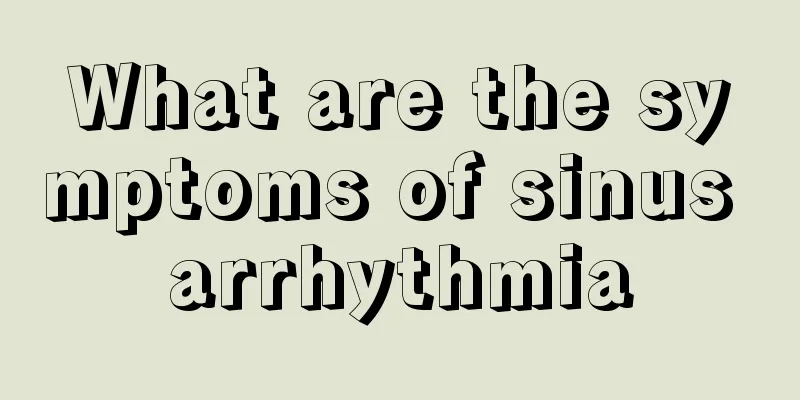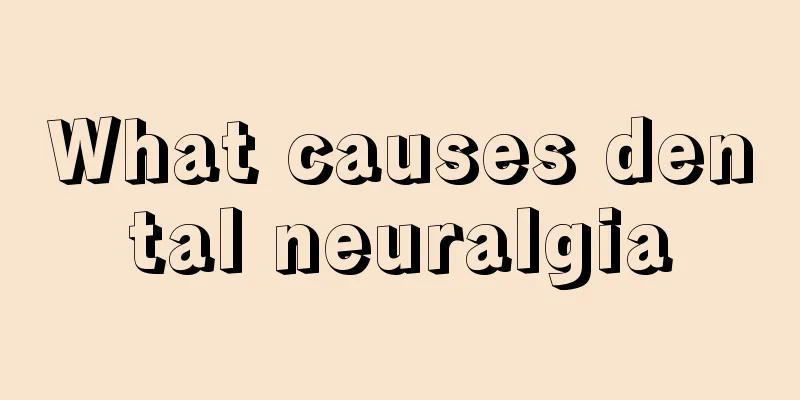What are the symptoms of sinus arrhythmia

|
Many people may not be familiar with sinus arrhythmia, but in fact it is mainly a sinus heartbeat, which can manifest as a fast or slow sinus heart rate and various abnormal problems, and some may also have symptoms of atrial fibrillation. 1. Sinus bradycardia The heartbeat is less than 60 times per minute and the beat is regular. For people who exercise regularly, because exercise enhances heart function, when the heart is at rest, it only needs to beat 40-60 times to maintain normal blood circulation. This is the benefit of exercise. If the heartbeat is less than 30 beats/minute, it usually means that there is conduction abnormality and you need to see a doctor. 2. Ectopic beat, premature beat: An abnormal electric wave is emitted somewhere in the heart, causing the heart to beat an extra beat. If the frequency is not high, the impact is usually not significant. However, if the frequency is high, or more than two consecutive extrasystoles occur together, it can easily cause more serious arrhythmia and affect heart function. 3. Atrial Fibrillation, Atrial Flutter: This type of arrhythmia usually indicates the possibility of latent heart disease, but hyperthyroidism and long-term poor control can also cause this type of arrhythmia. During an attack, the atrial contraction can reach 350 times per minute. Because the contraction speed is too fast, the pump contraction effect is not achieved. The atria are just trembling, and the blood is always idling in the atria. Only gravity can transport the blood in the atria to the ventricles, and then from the ventricles to outside the heart. Therefore, the cardiac output is 25% less than normal. Because the blood stays in the atria for a long time (due to idling), blood clots are likely to form. If the blood clots are unfortunately transported to blood vessels outside the heart, it will cause vascular embolism, cerebral stroke, pulmonary infarction and other complications. 4. Wolf Parkinson-White Syndrome (WPW Syndrome) is a congenital abnormality of the cardiac nervous system. In addition to the normal conduction nerves of the heart, one or more abnormal nerves grow. When the electric waves run to the abnormal nerves, short circuits are likely to occur, causing abnormal neural circuit circulation of electric waves between the atria and ventricles, often causing paroxysmal supraventricular tachycardia with a heart rate of more than 150 beats per minute. In most patients, the abnormal WPW pattern can be seen on the resting electrocardiogram, but the tachycardia will occur irregularly. Fortunately, the chance of death during an attack is not high. |
<<: How is shingles transmitted? Pay attention to these 3 situations
>>: Is dyshidrotic eczema contagious? You should know these things
Recommend
What are the common symptoms of ethmoid sinusitis?
Patients with ethmoid sinusitis usually experienc...
Advantages of Traditional Chinese Medicine in Treating Rectal Cancer
Rectal cancer is a common malignant tumor in the ...
How can men prevent prostate cancer?
Prostate cancer is a common disease among men. Ma...
What are the benefits of taking a hot bath
Everyone likes to take a hot bath when they get h...
Fat people’s summer outfits
Summer is a special season. Many people know that...
What are the symptoms of herpes encephalitis?
The symptoms of herpes encephalitis include dizzi...
What is the disease of stomachache and bloating
Stomach discomfort is very common in life. Many p...
What should I do if my one-year-old baby has swollen lymph nodes?
It is very common for a baby to have swollen lymp...
What food should I eat in the late stage of gastric cancer? You can try these three categories
There are still many foods that patients with adv...
What are the symptoms of prostate cancer? Is urination difficulty a manifestation of prostate cancer?
Prostate cancer is a relatively complicated disea...
What are the hazards of MSG chicken essence
In recent years, many people believe that MSG and...
Why do I have a stomachache and want to defecate after eating?
The phenomenon of stomach pain and the urge to de...
What is the method to wash a cup
We cannot live without cups in our lives, because...
How to use olive oil for hair care
Olive oil has special effects on skin and hair ca...
Keeping this area moist has eight benefits
Sweat is the "air conditioner" of our b...









